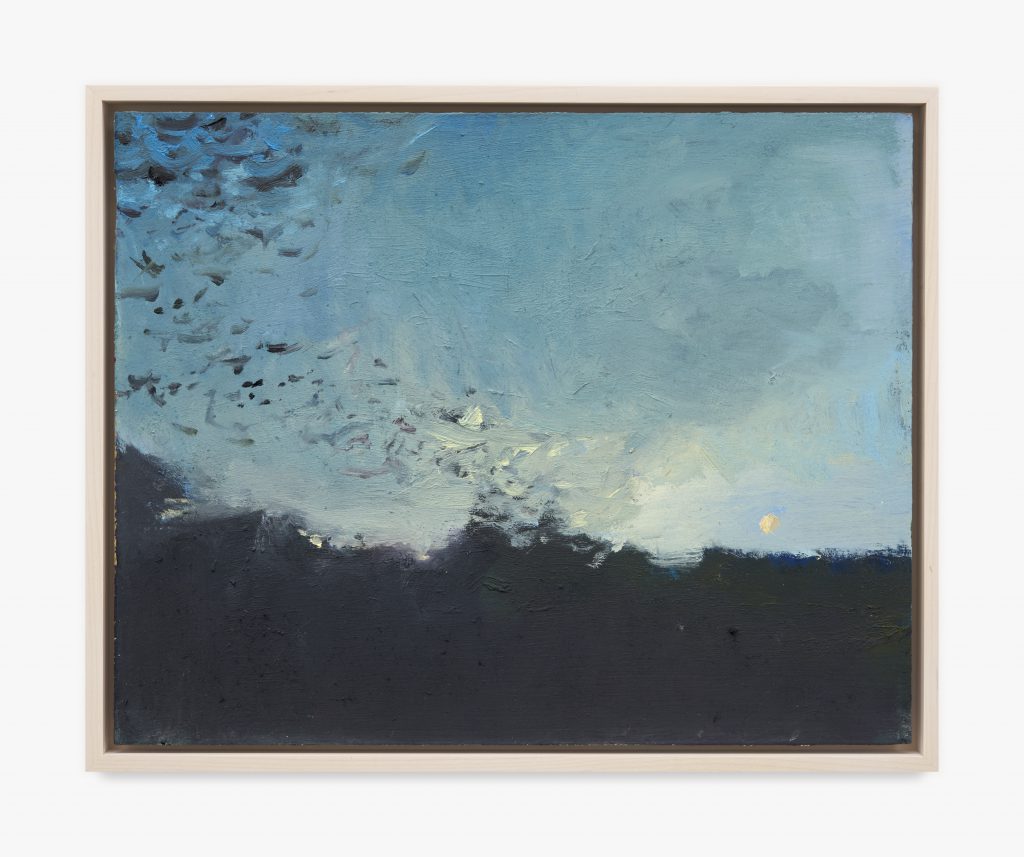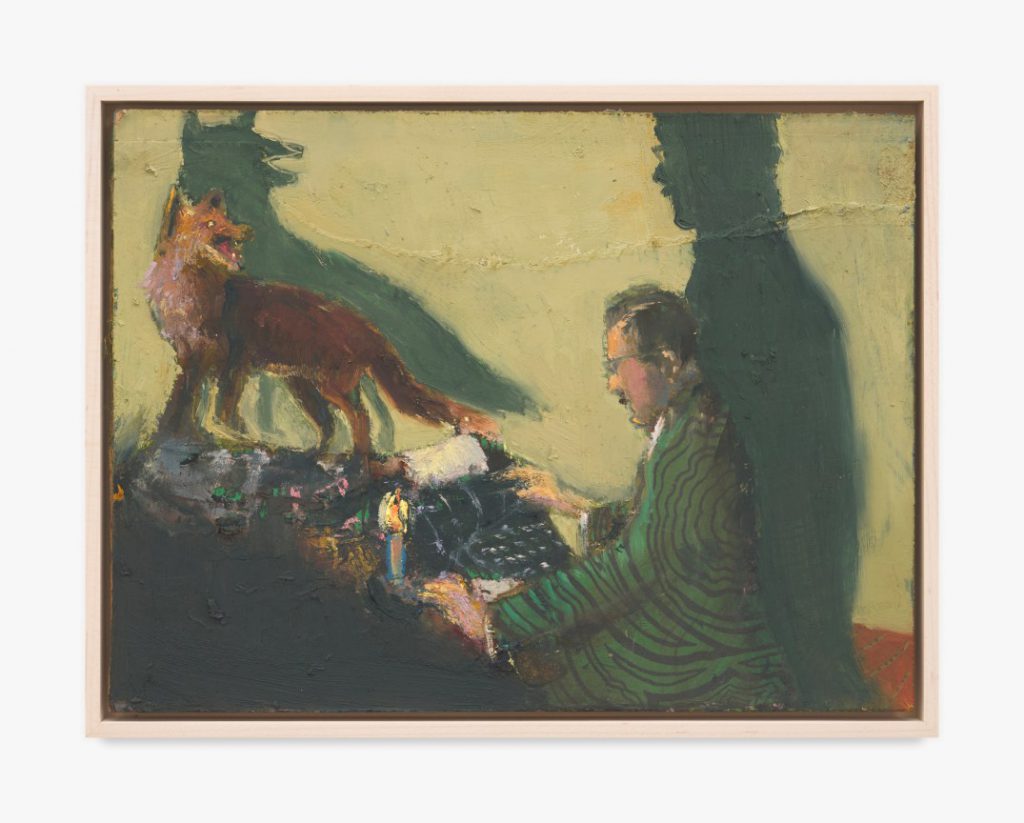1. Seth Becker at Venus Over Manhattan, through March 9.

Thirty-one small oil-on-panel paintings, often measuring less than twelve inches on any side, dot the walls of the gallery in A Boy’s Head, Seth Becker’s debut solo show in New York City. Each of the paintings here (all 2023)—featuring images of figures, animals and landscapes—captures a quiet moment. Several show artists at work; others imaginatively depict the dreams of animals and people. One features a whale sinking a ship; there are two portraits of Batman.
Paintings by the artist, who lives and works in Wappingers Falls, a small town south of Poughkeepsie, lend the gallery a sense of tranquility that can offer a welcome relief from the chaos of New York City. Each work also exerts a magnetic pull on viewers, drawing them near to examine the intricate brushstrokes that enliven the surfaces. One painting in particular, Bats, captured my imagination. Here, a pale moon hangs poised over a tree line, while a cauldron of bats flies across the sky, into the sunset. A haunting image, it could suggest a counterpoint to the turmoil in van Gogh’s Wheatfield with Crows (1890), the iconic painting that the Dutch artist completed just weeks before his death. But Becker’s work evokes the cathartic feeling of lying in a cold field, gazing skyward at the full moon. There is an understated eeriness to Becker’s painting: the dark silhouette of the tree line hints at the potential danger lurking within the shadows.

Perhaps the key to unraveling the work’s meaning—whether the image indicates fear or contemplation—can be found in another painting, Poet at Work. Here, a man sitting at a typewriter casts deep shadows on the wall beside him, while a fox perched at his desk turns to bark at him. The scene recalls Goya’s The Sleep of Reason Produces Monsters (1799), prompting a meditation on the eternal struggle between logic and creativity that torments an artist in the creative act. Becker captures this conflict in a fresh way, presenting it as one between the resolve to create and the fear of what might be conjured.
—Brianna Di Monda

2. Raymond Saunders at David Zwirner and Andrew Kreps, through March 30.
Post No Bills, a career-spanning survey for 89-year-old Oakland, California-based artist Raymond Saunders unfolds in two grand white gallery spaces of David Zwirner and Andrew Kreps. The installations beautifully showcase major mixed-media assemblages and paintings on canvas with sociopolitical undertones from 1968 to 2007. To know that the artist, who has dementia, may not be fully aware of this show, adds a feeling of melancholy to the two-part exhibition given the works’ great emphasis on memory and the passage of time. Throughout the show, an array of symbols appear—personal, cultural and religious; they underscore the fragility of life’s ephemera, and the solitude of an interior existence that can never be fully understood by another.

Most of the works are roughly covered in black tar-like paint, with splotches of bright emergency-tape yellow and other strong primary colors, overlaid with an amalgam of cutouts from newspapers, postcards, wallpaper samples, and wooden objects. Some compositions feature chalk-like outlines of figures, scribbled lines, scrunches of tape, ribbons, and spray painted here and there with drips and blotches. Two large paintings—Drawing a Still Life (1987) or Untitled (1996), over 6 by 5 feet, and 8 by 4 feet, respectively—impart the complexity of Saunders’s thinking—encompassing a personal expression of the African American experience. Street-smart and hyper-energetic, the works force a consideration of others’ lives. In his hands, common, found objects, ostensibly random markings, shapes, colors, and mundane images become talismanic, and deeply moving.
—Louise Decoppet